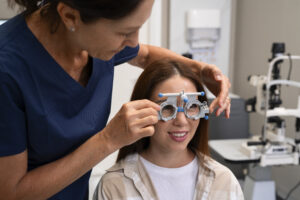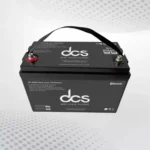Diabetic retinopathy (DR) is a common complication of diabetes that can severely affect vision. It’s the leading cause of blindness among working-age adults worldwide. The condition occurs when high blood sugar levels damage the blood vessels in the retina, leading to changes that can worsen over time. Early intervention by an eye specialist is crucial for preventing progression and preserving vision. This article will explore the different treatment options available for diabetic retinopathy, comparing their effectiveness, benefits, risks, and how they impact patient outcomes.
Understanding Diabetic Retinopathy
What Is Diabetic Retinopathy?
Diabetic retinopathy is a condition that develops in stages:
- Non-Proliferative Diabetic Retinopathy (NPDR): In this early stage, small blood vessels in the retina swell and leak fluid, causing symptoms like blurry vision. Patients often don’t notice significant changes at this point.
- Proliferative Diabetic Retinopathy (PDR): This advanced stage involves the growth of new, fragile blood vessels on the retina’s surface. These vessels can bleed, leading to severe vision problems, including possible retinal detachment.
What Contributes to Diabetic Retinopathy?
Several factors can accelerate the progression of diabetic retinopathy:
- Duration of Diabetes: The longer someone has diabetes, the greater the risk of developing DR. About 60% of people who have diabetes for 20 years or more will experience some level of DR.
- Blood Sugar Control: Keeping blood glucose levels in check is essential. Studies show that good control can significantly reduce the risk of DR.
- Blood Pressure: High blood pressure can worsen damage to the retina, increasing the likelihood of progression.
- Cholesterol Levels: Elevated cholesterol may contribute to the deterioration of retinal blood vessels.

Treatment Modalities Overview
What Are the Goals of Treatment?
The primary aims when treating diabetic retinopathy include:
- Preventing Vision Loss: Early treatment can help protect against serious vision impairment.
- Slowing Disease Progression: Timely interventions can delay the transition from NPDR to PDR.
- Enhancing Quality of Life: Effective management can improve daily functioning and overall well-being.
What Treatments Are Available?
Here are some common treatment options for diabetic retinopathy:
- Laser Therapy (Photocoagulation)
- Anti-VEGF Injections
- Corticosteroid Injections
- Vitrectomy Surgery
Comparative Analysis
How Do They Compare?
When it comes to effectiveness:
- Early Stages (NPDR): Anti-VEGF treatments may shine here, particularly for managing macular edema, while laser therapy is crucial in preventing progression to PDR.
- Late Stages (PDR): Vitrectomy may be necessary for advanced cases, but laser therapy remains important for controlling new blood vessel growth.
What About Safety?
Each treatment has its own safety profile:
- Laser Therapy: Risks include visual field loss and scarring.
- Anti-VEGF: Potential for infection and discomfort from injections.
- Corticosteroids: Concerns about increased eye pressure and cataracts.
- Vitrectomy: Surgical risks such as retinal detachment and anesthesia complications.
Cost and Accessibility
Financial considerations can play a significant role in treatment decisions. Anti-VEGF therapies tend to be more expensive and may not always be fully covered by insurance, while laser treatments often have clearer cost structures.
Patient Preference
Patient adherence varies based on the treatment method:
- Anti-VEGF therapy requires regular injections, which might be a barrier for some.
- Laser therapy is a one-time procedure, but follow-ups may still be needed.
- Surgical options like vitrectomy involve longer recovery, impacting patient choice.
Emerging Therapies and Future Directions
There’s exciting research happening in the field of diabetic retinopathy. New treatments like gene therapy and stem cell research are being explored, along with next-generation anti-VEGF drugs that aim to improve outcomes and reduce the frequency of treatments. Ongoing clinical trials will help shape the future of diabetic retinopathy management.
Conclusion
This analysis of treatment options for diabetic retinopathy highlights the distinct benefits and challenges associated with each approach. Effective management is essential for preserving vision and enhancing the quality of life for those affected by this condition. Healthcare providers, including ocular specialists and vision care professionals, need to consider individual patient circumstances, such as the stage of the disease and overall health, to determine the best treatment path forward. Staying updated on emerging therapies will also empower healthcare teams to optimize patient outcomes in the long run.




